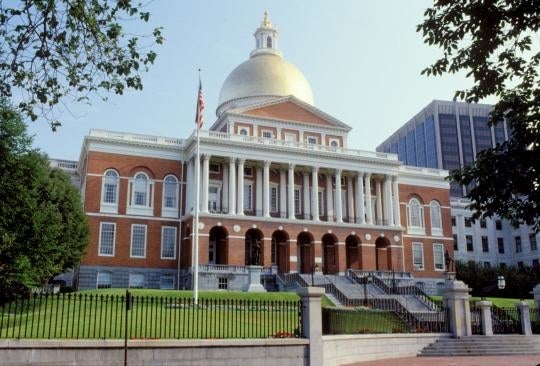Following two years of significantly increased funding for public higher education resulting in a tripling of state-offered financial aid and making community colleges free, the Board of Higher Education wants to keep their foot on the gas next year for continued investments into the sector.
The board on Tuesday unanimously approved budget recommendations for fiscal year 2026, which include increased funding for early college programs, continuing to ramp up financial aid investments, and sending more money towards wraparound services and infrastructure improvements on campuses.
“It’s important that we focus our resources and concentrate on things that are going to have an impact,” said Commissioner of Higher Education Noe Ortega during Tuesday’s Board of Higher Education meeting.
Since voters passed a constitutional amendment in 2022 to place a higher tax on residents who earn over $1 million a year, and direct that new revenue towards education and transportation investments, higher education spending has boomed.
The amount of financial aid provided by the state doubled in the past two years and tripled over the last four years, board chair Chris Gabrieli said Tuesday.
The investments have been fueled by new income surtax revenue. Though the pot of money is statutorily required to be spent only on education and transportation initiatives, there’s no requirement as to how lawmakers and Gov. Maura Healey divvy up those funds.
In 2023, the first year budget writers had surtax revenue to bake into the state’s spending, the budget split $1 billion of surtax revenue with a slight lean towards education investments — $524 million for education and $477 million for transportation.
The following year, Healey and lawmakers carved up $1.3 billion of surtax dollars less equally, steering 58.5 percent of the surtax spending towards education and 41.5 percent toward transportation spending.
As a new legislative session approaches, transportation revenue is expected to be one of major topics of debate next year. The MBTA is forecasting a $700 million budget shortfall next summer, and communities outside of greater Boston will likely be clambering for more money for road, bridge and infrastructure repairs.
The overall state revenue picture has dimmed, but the surtax continues to exceed expectations, leading to a surplus of unbudgeted funds. With investments favoring education initiatives over the past two years, it’s possible that budgetwriters will look to tap more surtax dollars to meet the state’s transportation needs — a move that could stifle the continued high-volume flow of dollars into higher education.
The budget memo the board approved on Tuesday urges that between 25 and 33 percent of total income surtax funds be dedicated to public higher education in fiscal year 2026 and every year thereafter.
The memo says that “first and foremost” they believe the public higher education’s share of the income surtax dollars should be specifically dedicated to so-called wraparound services, “distributed in a manner aimed at improving postsecondary outcomes of learners from low- and modest income backgrounds, as well as racially minoritized students and others in disadvantaged groups.”
Wraparound services include personalized coaching, academic support, on-campus leadership opportunities and resources for vulnerable students.
This past budget cycle, the state injected $28 million into the SUCCESS program which funds these services for students at 15 community colleges and expanded the program to state universities.
“Wraparound services really begin to think about what happens in the post-post-secondary aspect, right? We’re doing a lot of work to think about preparation for the workforce, for students to exit our institutions, to be successful,” Ortega said.
Additional income surtax funding would have to ramp up to a total of approximately $100 million over the next two years to provide these services to every low and moderate-income student in the state — approximately $2,000 per student, on top of existing SUCCESS funding, according to the memo.
Secondly, they recommend finding ways to reduce or eliminate cost barriers beyond tuition and fees that prevent lowest-income students from attending college. Their third recommendation is to support capital funding and increase system and institution capacity.
There’s an estimated $4.5 billion in deferred maintenance across 28 million square feet of properties that are jointly managed by public colleges and universities and the state’s Division of Capital Asset Management and Maintenance.
“The most critical thing that comes to mind is the actual facilities themselves, that students attend in, that faculty and staff work in, the actual place where learning happens,” Ortega said Tuesday.
The board recommends that the state provide $125 million more annually to address the capital needs of the public higher education system, which it says could create up to $2.5 billion in additional bonding capacity dedicated to higher education over the next 10 years.
The last recommendation is to “ensure financial stability and sustainability for the commonwealth, institutes of higher education, and students and families.”
In addition to making community college free in the fiscal year 2025 budget, lawmakers and Healey expanded financial aid programs for in-state students attending state universities to $80 million through the MASSGrant Plus program. That began as a $7.5 million program in 2018 under former Gov. Charlie Baker.
Using that expansion, the University of Massachusetts announced this fall that by next year any in-state student coming from a family who earns under $75,000 can attend a UMass school for free. The budget also included an additional $175.2 million for scholarships awarded through the General Fund.
“We also, this year, are in the process of going forth with an ad campaign to make sure that residents of the commonwealth are aware of all these financial aid investments and that they may be qualified to receive significant financial aid that they may not have before, so that they pursue that their higher education goals. In addition to that, we want to continue to increase funding in financial aid and continue to make public higher education more affordable and more accessible,” said deputy commissioner of administration, finance and operations at the department, Matthew Cole.

